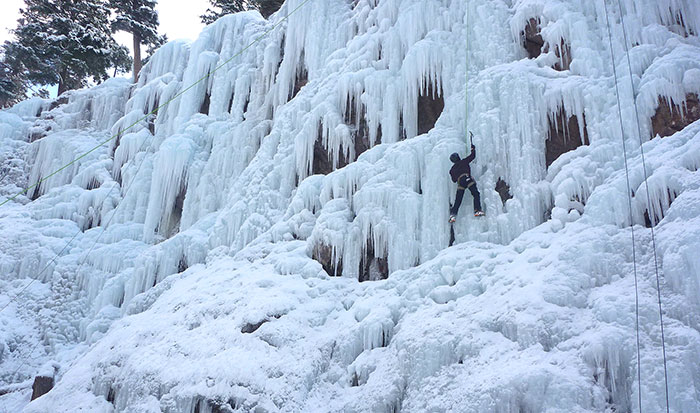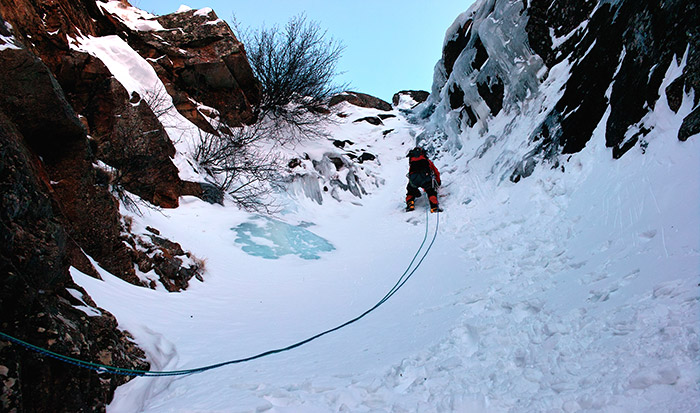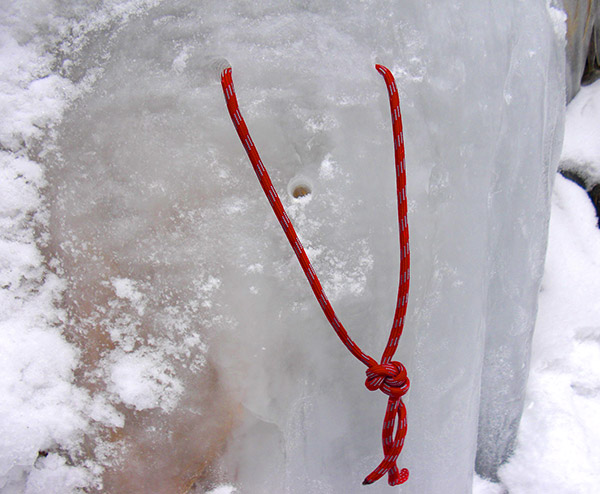Ice climbing is an extreme sport that involves ascending frozen waterfalls, icefalls, and other formations using specialized equipment such as crampons, ice axes, and ropes. It is a physically and mentally challenging activity that requires skills, strength, and experience.
While ice climbing can be exhilarating and rewarding, it also comes with inherent risks and dangers. But how dangerous is ice climbing? This article will explore the hazards associated with ice climbing and the various ways to mitigate them.
| Natural Hazards | Human Risks |
| Avalanche | Equipment Failure |
| Falling Ice | Lack of Experience |
| Cold Temperature | Human Error |
Is ice climbing dangerous? Yes, it is. And when talking about the danger of ice climbing, you need to be aware of the two types of risks involved when doing the sport: natural hazards and human risks.
Natural hazards in ice climbing are the risks arising from the natural environment in which the activity occurs. On the other hand, human risks in ice climbing arise from the climber’s actions or decisions.
Contents
Natural Hazards
When we talk about natural hazards in ice climbing, we refer to the risks that arise from the natural environment in which the activity occurs. Ice climbing typically occurs in mountainous regions, where the weather and conditions can be unpredictable and challenging.
One of the most significant hazards in ice climbing is the risk of avalanches. When the snowpack is unstable, it can cause avalanches that can be fatal to climbers. The risk of avalanches is exceptionally high in areas with steep slopes or heavy snowfalls, and climbers must take measures to reduce the risk of being caught in one.
Another natural hazard in ice climbing is falling ice. Ice formations can be unstable and may break off unexpectedly, causing injury or death to climbers below. This risk is exceptionally high in areas with a lot of sunlight or rapidly changing temperatures, as this can cause the ice to expand and contract, making it more likely to break off.
Avalanche
Avalanche is one of the most significant natural hazards that ice climbers face. Ice climbing often takes place in mountainous areas where snow is abundant. When the snowpack is unstable, it can cause avalanches that can be fatal to climbers.
To mitigate this risk, climbers must know about the weather conditions and snowpack stability. They should carry avalanche safety equipment such as beacons, probes, and shovels and know how to use them.
Falling Ice
Falling ice is another natural hazard that can be dangerous for ice climbers. Ice formations can be unstable and can break off unexpectedly, causing injury or death. To reduce the risk of falling ice, climbers should choose routes less likely to have falling ice and wear a helmet to protect their heads.
Cold Temperature
Cold temperature is another natural hazard that ice climbers face. Climbing in ice cold temperatures can lead to hypothermia, frostbite, and other cold-related injuries. To mitigate this risk, climbers should dress appropriately for the conditions and carry extra layers of clothing.
Human Risks
Human risks in ice climbing are the risks that arise from the actions or decisions of the climbers themselves. These risks are often related to factors such as experience, skill level, and judgment. Equipment such as ropes, anchors, and carabiners can only succeed if they are properly maintained or used with excessive force or wear and tear.
Another human risk in ice climbing is the need for more experience. Ice climbing is a challenging and technical sport that requires a significant amount of skills and experience to master. Novice climbers may be more likely to misjudge the terrain or fail to secure their equipment correctly.
Human error is another significant risk in ice climbing. Climbers may make mistakes such as taking unnecessary risks, pushing themselves too hard, or failing to communicate effectively with their climbing partners. These mistakes can lead to falls or other accidents that can be dangerous or even fatal.
Equipment Failure
Equipment failure is a significant human risk in ice climbing. Climbers rely on their equipment to keep them safe while ascending the ice. The consequences can be severe if equipment such as ropes or anchors fails.
To mitigate these risks, climbers should scrutinize their equipment before each climb to ensure it is in good condition. They should also carry extra equipment in case of failure.
Lack of Experience
Lack of experience is another human risk in ice climbing. Ice climbing is a challenging and technical sport that requires experience and skill. Climbers who lack experience may be more likely to make mistakes that could lead to injury or death.
To mitigate this risk, climbers should receive proper training before climbing the ice formations. More importantly, training should include instruction on using equipment safely, assessing risks and handling emergencies.
Human Error
Human error is another significant risk in ice climbing. Climbers may make mistakes, such as misjudging the terrain or failing to secure their equipment correctly. These mistakes can lead to falls or other accidents that can be dangerous or fatal.
To mitigate this risk, climbers should use good judgment and make decisions that prioritize safety over other considerations, such as completing a climb or reaching the summit.
Conclusion
Ice climbing is an extreme sport that comes with inherent risks and dangers. Knowing how dangerous ice climbing is and knowing all the risks involved will make you take extra caution during the climb. Remember that ice climbers should prioritize safety and take necessary precautions to ensure a safe and enjoyable climb.



